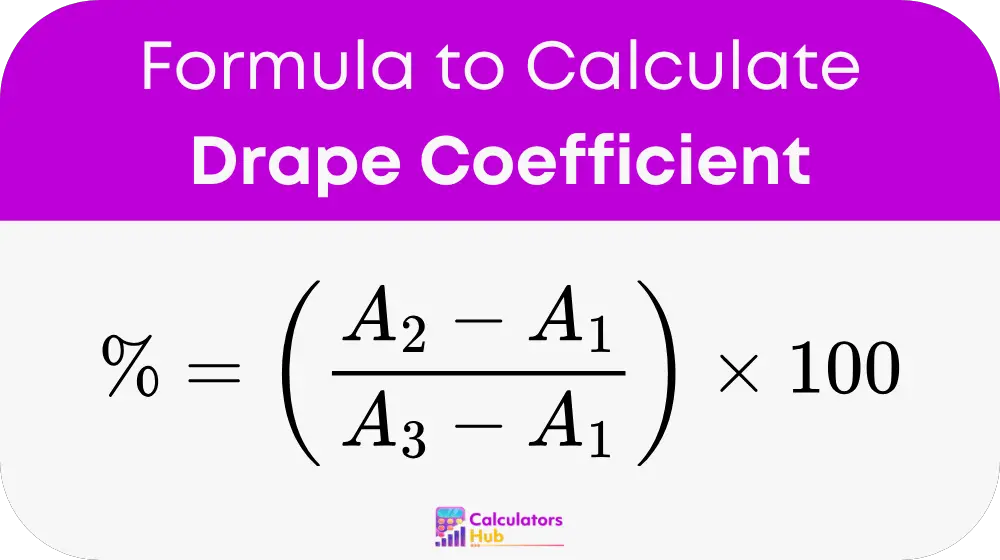A Drape Coefficient Calculator is used to determine the drape property of a fabric, which measures how a textile hangs or conforms to a shape. This is essential in textile and fashion industries to evaluate fabric behavior in garments, upholstery, and other applications. A higher drape coefficient means a fabric is stiffer and does not conform well, while a lower coefficient indicates better flow and adaptability.
Formula of Drape Coefficient Calculator
The drape coefficient is calculated using the following formula:

Where:
- A₁ = Area of the supporting disc (mm²)
- A₂ = Projected area of the draped specimen (mm²)
- A₃ = Area of the undraped specimen (mm²)
This equation provides the percentage of how much the fabric drapes compared to its original state.
Reference Table for Common Drape Coefficients
| Fabric Type | Typical Drape Coefficient (%) |
|---|---|
| Silk | 30 – 40 |
| Cotton | 40 – 55 |
| Wool | 35 – 50 |
| Polyester | 45 – 60 |
| Denim | 55 – 70 |
| Leather | 70 – 85 |
This table helps estimate drape coefficients for different materials without needing manual calculations.
Example of Drape Coefficient Calculator
Given Data:
- A₁ (Disc Area) = 1000 mm²
- A₂ (Projected Area) = 3000 mm²
- A₃ (Undraped Area) = 5000 mm²
Calculation:
Drape Coefficient = (3000 – 1000) / (5000 – 1000) × 100 = (2000 / 4000) × 100 = 50%
This means the fabric has a medium drape behavior suitable for structured clothing.
Most Common FAQs
The drape coefficient determines how a fabric will behave when used in clothing or furnishings. It helps designers select materials for comfort and style.
Fabrics with high drape coefficients can be softened using fabric conditioners, mechanical softening, or blending with more flexible materials like silk.
No, the drape coefficient is always between 0% and 100%, where 0% indicates complete drapability and 100% means no drape at all.